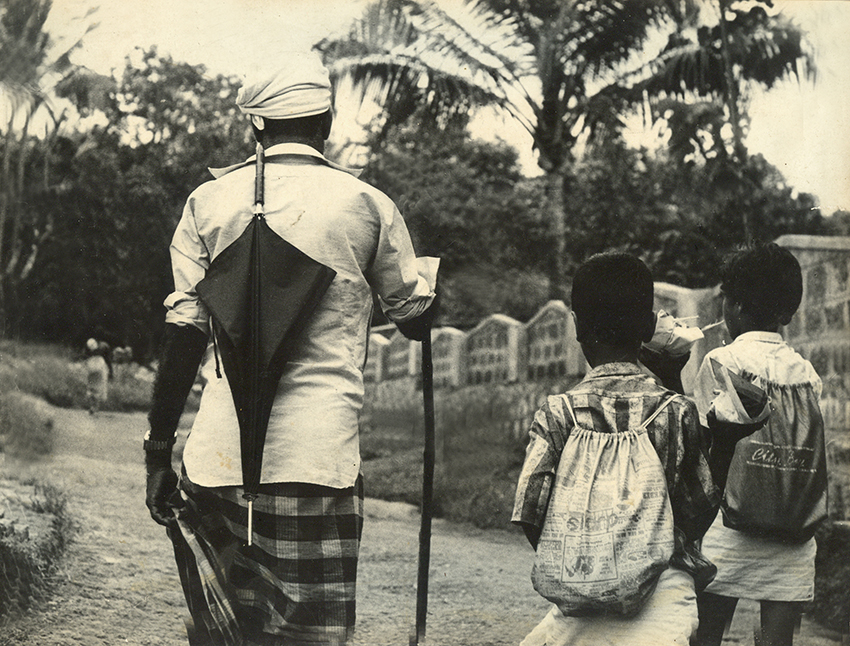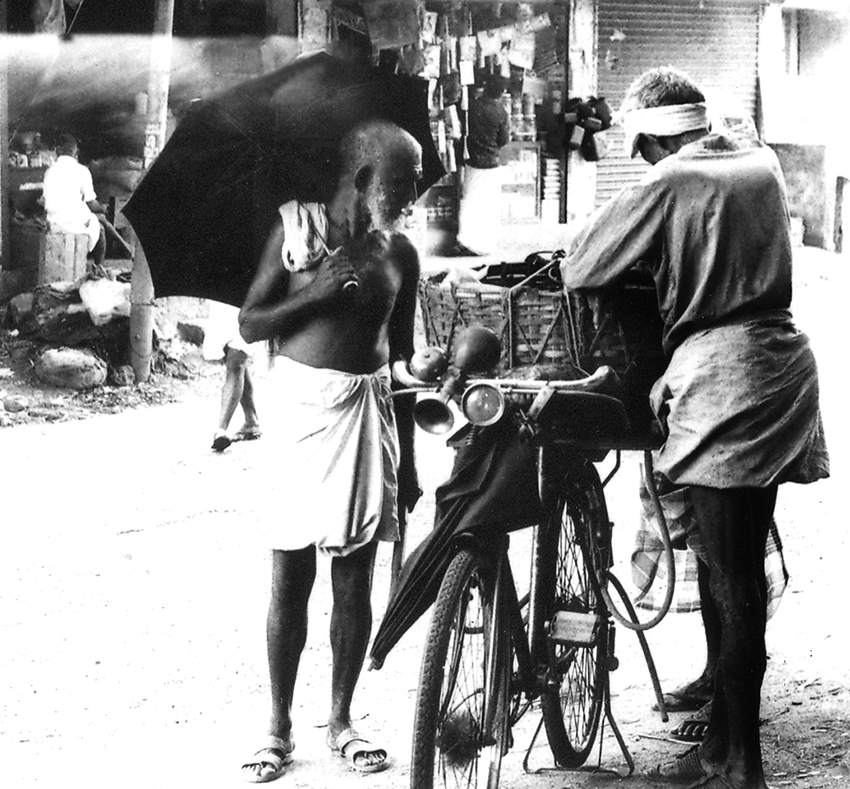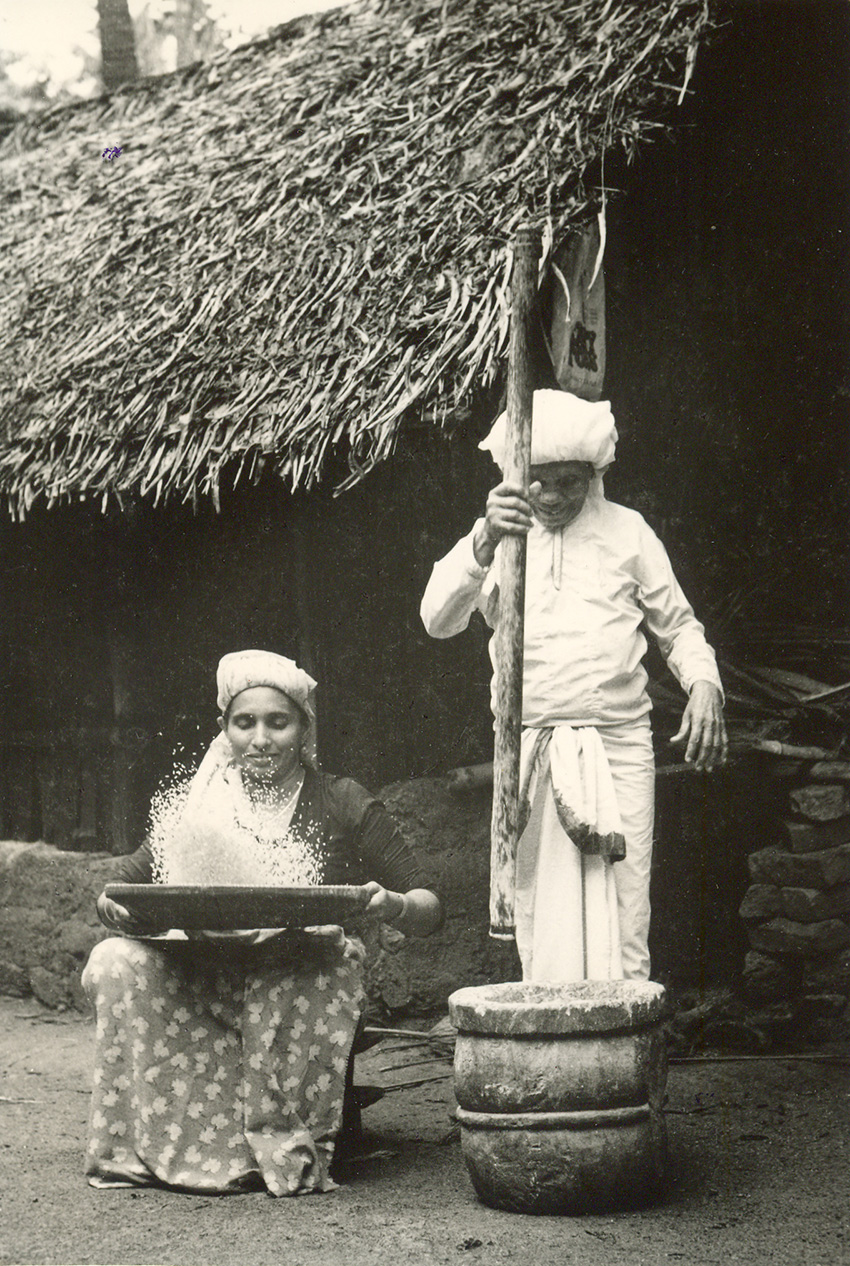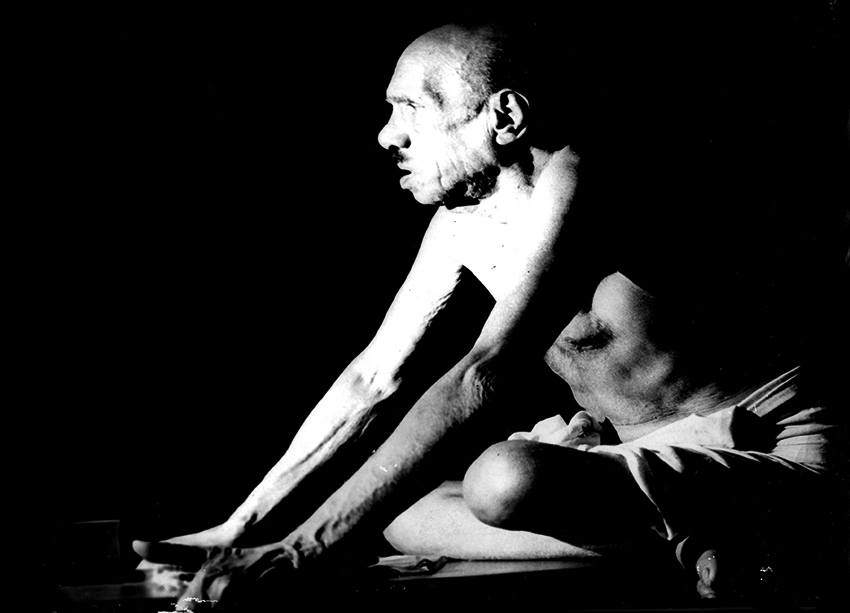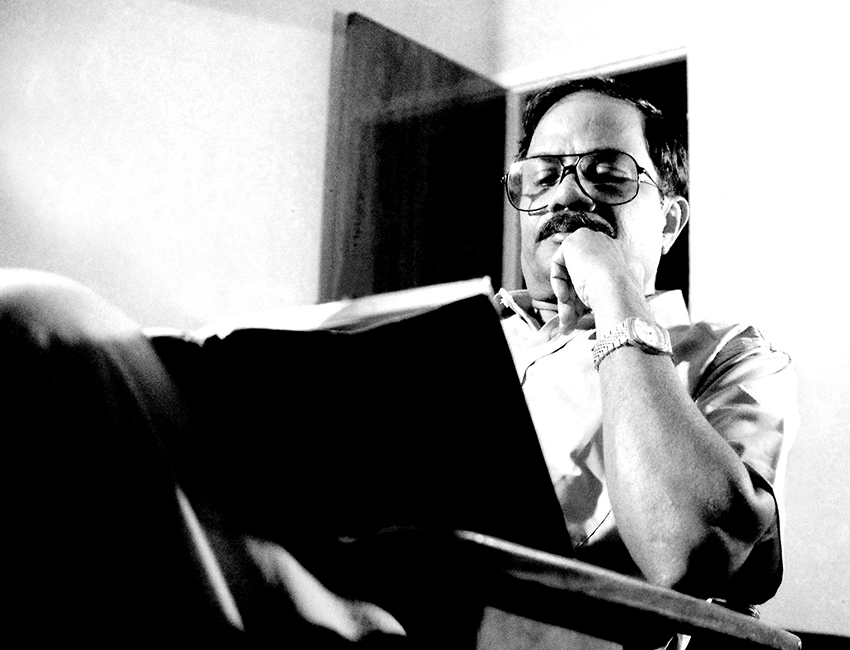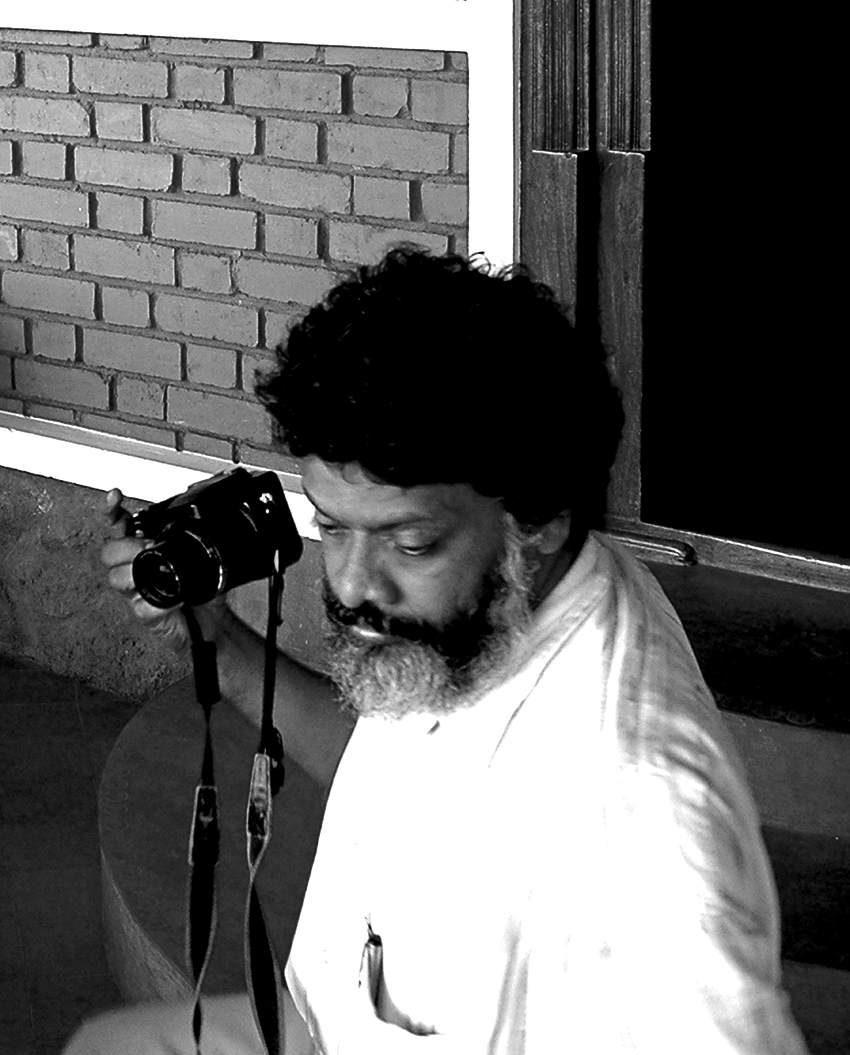The photographer Razaq Kottakkal created his art manually, with a virtuosity that is perhaps impossible to reproduce by today’s digital technologies. Yet he was optimistic about the social and artistic possibilities that new technology might bring. Some thoughts on the nomadic chronicler of an era, from Kamalram Sajeev.
A nomadic follower of the aesthetically rich modernist traditions and literature oriented cultural observances of Kerala, Razaq Kottakkal chronicled an age, from black and white to colour. The print media industry in Kerala, which is often praised for its seemingly hyperbolic estimates on circulation saturation, owes very much to this anarchistic photographer for the decorative sway it had obtained before losing to the showiness of a mightier domain of visual media. Though the industry was technologically running on par with its various counterparts across India, the faculty of photography was constricted to habitual routines. In Kerala, the post emergency era, which was fertile ground for new thinking in all cultural premises, such as literature, cinema and theatre, was lacking new experiments in photography. It is here that Razaq induced an ideologically seeded paradigm shift.
To begin with, he captured historical shadows of the great modernist Malayalam writers, like Vaikom Muhammed Basheer, Kamala Das and M.T.Vasudevan Nair. The multi – accentuality inherent in these photographs was treated as a cultural revolution, thanks to his innovations of themes. For example, Kamala Das, the Indian-English poet (and onetime poetry editor of the erstwhile Illustrated Weekly of India), was the most photographed literary subject of that time. creating a magic of aura and ambience with light, Razaq deconstructed the existing visual stereotype of the writer for ever. Ever since this re-formation, Kamala is remembered through his photographs, which are multiple in frames, printed aplenty. Most of his photographs were printed in news print with facial smoothness better than sandpapers! Even in his color images, there appeared no registration failures of color separation. Such was his mastery over contrast, conceived manually. A virtuoso in light and shadows, Razaq never used artificial lights. He waited for light to come or go.
Never had he worked from an atelier. Designs he made with his non–digital cameras were very much mundane, taken from the depths of very common realities. Razaq portrayed first pictures of anti-nuclear campaigning from the Indian half of the earth lying in the western coasts. It was later archived as the famous ‘Neendakara Photos’, printed overmuch in the wrestling past of the little neo-left magazines and pamphlets. Now they are lost in transition, but are passionately stored in the lockers of those hanging on to sentiments of the firebrand Subaltern activism still existent in the under layers of contemporary Kerala.
Razaq Kottakkal is the first photographer in India who represented and confronted identity politics as a subtext. His torrent of frames on Malappuram, a Muslim majority district from the Malabar belt of Kerala, frequently and deceitfully referred to as a terrorist hub by the predominant mainstream media, is the best available cultural riposte for the political stratagem that acts as the biggest threat in Kerala’s secular sphere. Through his incidental shots Razaq has illustrated the strength of an alienated cultural stratum that enriches the traditions and heritage of cultural multiplicity. The ‘Malappuram Photos’ may be the only volume of cultural memorabilia that registers the reality of Muslim life before the Persian dependence of the Kerala society.
Razaq considered photography as an arrangement for activism. He was never interested in the fame or stardom of the living legends. Neither was he taking photographs to make money. In a pursuit of the emancipation of sidelined communities, whether they are the landless adivasis of Wayanad or the always excluded people of Manipur, he camped with them with and without camera. That is how Irom Chanu Sharmila ranked near the top among his subjects – just below the Neendakara and Malappuram photos – in his long index of agitating outdoors. In fact, Razaq was slowly withdrawing from active photography by the invasion of digital technology. He never accused the new technology of being unsociable or uncommunicative. However, he came to believe that his own assignment was over. With respect to the future of photography he was very confident of the ‘democratainment’ that the digital revolution could bring in. As he wrote in an essay published last year, a situation where everybody is a photographer could enhance possibilities for the public sphere among the multi layered, unknown citizenry in democracies like India..
Razaq was 53 when he died. He never used Photoshop.













